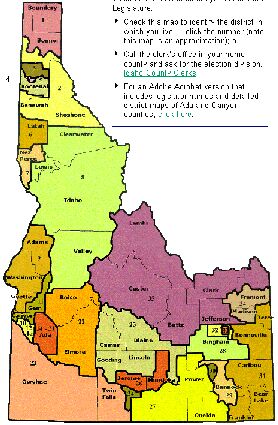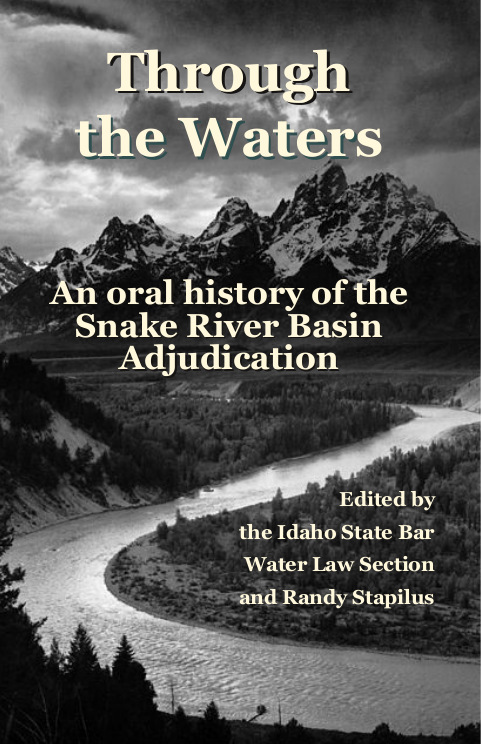The old Tammany politico George Washington Plunkitt, one of the great cynics of public affairs, liked to say that “reformers are only mornin’ glories” – they never last. Plunkitt wasn’t all right – some reformers have gone on to do good for an extended stretch. But he wasn’t all wrong either: It’s a tough job to keep that reforming ethic intact; so many things, sometimes little things, whittle away at it.
 Consider the cat – an easy-going, eight-year-old calico named Agie, as of now the most famous cat in Oregon – that has the city of Willamina in the biggest uproar of its recent history.
Consider the cat – an easy-going, eight-year-old calico named Agie, as of now the most famous cat in Oregon – that has the city of Willamina in the biggest uproar of its recent history.
Agie was a stray kitten when she fell into the hands of Melissa Hansen, the librarian at the Oregon timber town; she named the feline for Agatha Christie. Feeling that cats and things literary go together (cat blogging, anyone?), she moved the cat into the library, with official city permission. It has been there since, developing fans around town and especially among the children at the library. The chldren also have become enamored of two other library residents, hamsters named Hamlet and Othello.
The cat (as we observed this evening) is friendly but not overbearing, and clearly in good health. She has been declawed, and has no history of biting or other violence. The hamsters were asleep, but they were shielded consistently from children and others by placement of their terrarium inside a book case – visible but not touchable.
That was the situation the Willamina City Council voted, at its meeting of December 8, to upend by banning animals from city buildings.
 A generalized word here about Willamina city. It is one of the many Northwest towns that used to rely, more than it can now, on timber and other industry; while full of assets and a fine location, it has consequent economic and social problems. Its city government has some history of conflict and turmoil, and at tonight’s meeting some in the audience recalled days of council members standing up and yelling at each other. Problems accumulated. In the last few years, council members and a new mayor (though veteran in city activities) came on the scene, determined to work together civilly (as they apparently have) and to solve some of the problems. By varied accounts, they have worked hard and have solved some a number of problems. People spoke of all that, too, at this evening’s council meeting.
A generalized word here about Willamina city. It is one of the many Northwest towns that used to rely, more than it can now, on timber and other industry; while full of assets and a fine location, it has consequent economic and social problems. Its city government has some history of conflict and turmoil, and at tonight’s meeting some in the audience recalled days of council members standing up and yelling at each other. Problems accumulated. In the last few years, council members and a new mayor (though veteran in city activities) came on the scene, determined to work together civilly (as they apparently have) and to solve some of the problems. By varied accounts, they have worked hard and have solved some a number of problems. People spoke of all that, too, at this evening’s council meeting.
But as councilors and constituents ruefully noted, the crowd that filled the city hall meeting room to standing room only was not there to discuss “parks or paving or budgets.”
They were there to proteest on behalf of a cat. And a couple of hamsters.
What apparently happened on December 8 – according to public and unrebutted statements by two non-councilors who attended the meeting – is that most business was undertaken over the course of a couple of hours; the small audience stepped out for a few minutes; and by the time it returned, the council, with strong backing from the mayor, had approved a motion banning animals from city buildings. Meaning, Agie, Hamlet and Othello.
Evidently – according to statements from audience members which were unrebutted – no earlier notice had been given, and no public reasons (then) were offered. The library staff was taken completely unawares, as was the rest of the city.
The council and mayor probably were taken unawares by the depth and breadth of the reaction. Agie became the talk of the town. Petitions were drafted and circulated even in local businesses; one blasting the decision and supporting the cat drew about 200 signatures (this in a city with a population of around 1,800) and was delivered to the council. The story, which broke in the Sheridan Sun, spread to the McMinnville News Register, the Salem Statesman Journal and the Portland Oregonian. Portland television stations were running stories (one of them called an assistant library on her cell phone at the council meeting). The meeting room was standing room only – the first time, all seemed to agree, in anything like recent times.
The explanations for the council decision varied. The mayor focused on legal liability should the cat, say, bite someone, and held up a letter from the city’s insurer saying the cat was not insured. (She admitted she hasn’t inquired about the cost of insuring a cat with no bad history, and gave no indication of interest in finding out.) Another council member worried about residents who might be allergic to cats. Another said that three people – all anonymous – had complained about the cat. However much validity there was in any of these reasons (which had a way of shifting around in importance during the meeting), they suggested an air less of underlying cause than of after-the-fact justification.
By the time the cat part of the meeting had ended, there was a sense that little of this was really about the cat – that something else, some other issue or person or faction or problem or emotion – was buried underneath. The explosive lay elsewhere; the cat was merely the match.
That seems evident because when you consider what would have happened in front of a real “reform” council and mayor. In that scenario, when someone brought forth an issue with the cat – be it liability, health or something else – the “good government” response would be, “Fine. Come to the next council meeting, we’ll put it on the agenda, invite the library people to answer questions, and talk about what options we might consider.” None of that happened. The decision seemed to arrive ahead of much of the justification, and certainly ahead of public involvement. And that, as much as anything else, seems to have aggravated so many of the people at the council meeting this evening.
The council at first seemed determined to stay the course. Mayor Rita Baller said she thought the only thing the council would decide at this meeting was the date by which the animals must leave the library. A proposal to take the centrist course sought by the city’s library board, to grandfather in the existing animals before imposing a ban, couldn’t find a second. But faced with a crowd of city residents testifying almost in unison to the contrary, and evidence that most of the city was opposed, none of the council members seemed eager to be the one who set that date. They deferred further action till their next meeting, next month.
That may have signalled a late awareness of a better approach – or was it a less-packed council meeting room? Council members, and the mayor, bemoaned that the public never gets as interested or involved in the workaday business of the city – budgets, streets, police, parks. But when city leaders make midnight decisions and suggest that the will of a clear and determined constituency will be rolled over, they shouldn’t be surprised at the result:
“Why bother? Why get involved? They won’t listen anyway. It’s just the same old story …”
Share on Facebook
















 Metaphors aside, that’s a good thing, however tired some of us may be getting at the steady rainfall and periodic light flooding. The flooding, we can at least console ourselves, hasn’t done much damage or overflowed many critical waterways. And as for the rainfall … well, we just need to take care as we go out to celebrate tonight.
Metaphors aside, that’s a good thing, however tired some of us may be getting at the steady rainfall and periodic light flooding. The flooding, we can at least console ourselves, hasn’t done much damage or overflowed many critical waterways. And as for the rainfall … well, we just need to take care as we go out to celebrate tonight. Consider the cat – an easy-going, eight-year-old calico named Agie, as of now the most famous cat in Oregon – that has the city of Willamina in the biggest uproar of its recent history.
Consider the cat – an easy-going, eight-year-old calico named Agie, as of now the most famous cat in Oregon – that has the city of Willamina in the biggest uproar of its recent history. A generalized word here about Willamina city. It is one of the many Northwest towns that used to rely, more than it can now, on timber and other industry; while full of assets and a fine location, it has consequent economic and social problems. Its city government has some history of conflict and turmoil, and at tonight’s meeting some in the audience recalled days of council members standing up and yelling at each other. Problems accumulated. In the last few years, council members and a new mayor (though veteran in city activities) came on the scene, determined to work together civilly (as they apparently have) and to solve some of the problems. By varied accounts, they have worked hard and have solved some a number of problems. People spoke of all that, too, at this evening’s council meeting.
A generalized word here about Willamina city. It is one of the many Northwest towns that used to rely, more than it can now, on timber and other industry; while full of assets and a fine location, it has consequent economic and social problems. Its city government has some history of conflict and turmoil, and at tonight’s meeting some in the audience recalled days of council members standing up and yelling at each other. Problems accumulated. In the last few years, council members and a new mayor (though veteran in city activities) came on the scene, determined to work together civilly (as they apparently have) and to solve some of the problems. By varied accounts, they have worked hard and have solved some a number of problems. People spoke of all that, too, at this evening’s council meeting. Our view on the current districting map for Idaho has been that it’s not ideal but not bad either – allowing for some problematic areas. One of those is a district connecting a small group of people near Idaho Falls with a population base located around 80 miles away near the Utah border, with no useful direct road contact between (unless you want to rev up your four wheel drive, you have to veer outside the state or district to get from one to the other). It’s an unfortunate district, no doubt. There’s another running from Homedale to Twin Falls almost as bad. Such things happen to someone in every reapportionment.
Our view on the current districting map for Idaho has been that it’s not ideal but not bad either – allowing for some problematic areas. One of those is a district connecting a small group of people near Idaho Falls with a population base located around 80 miles away near the Utah border, with no useful direct road contact between (unless you want to rev up your four wheel drive, you have to veer outside the state or district to get from one to the other). It’s an unfortunate district, no doubt. There’s another running from Homedale to Twin Falls almost as bad. Such things happen to someone in every reapportionment. 
 Dignity Village has been a community flashpoint for a while, but in considerable part because of its very existence – a specific physical location (unlike any other in the Northwest) where the problem of homelessness resides. But it has turned into something else: A community, which has actually set about starting to solve some of its own problems.
Dignity Village has been a community flashpoint for a while, but in considerable part because of its very existence – a specific physical location (unlike any other in the Northwest) where the problem of homelessness resides. But it has turned into something else: A community, which has actually set about starting to solve some of its own problems.
 The case was old even then, rolling back and forth through the court system for more than a decade already; and more than four more years has passed since then, before a state supreme court ruling. The question of whether the state has properly funded public schools has been the state’s high court five times now – a stunning unwillingness, up to now, to make a clear decision.
The case was old even then, rolling back and forth through the court system for more than a decade already; and more than four more years has passed since then, before a state supreme court ruling. The question of whether the state has properly funded public schools has been the state’s high court five times now – a stunning unwillingness, up to now, to make a clear decision. He has a difficult path to walk. At home, he has to remain acceptable to his Oregon audience, which in recent years has elected only him among Republican candidates to a statewide position. That is in large part because he presents the image of a moderate guy, definitely not a Democrat but – apparently at least – to the left of most of the Republican majority in the Senate. (Obviously his close ties to Democrat Ron Wyden, whose role is less complex, helps.) In Washington, there is that conservative majority to deal with: He could could lose all clout in the Senate if he veers too far from it. It’s a complex task, and Smith appears to have honed his calculus well.
He has a difficult path to walk. At home, he has to remain acceptable to his Oregon audience, which in recent years has elected only him among Republican candidates to a statewide position. That is in large part because he presents the image of a moderate guy, definitely not a Democrat but – apparently at least – to the left of most of the Republican majority in the Senate. (Obviously his close ties to Democrat Ron Wyden, whose role is less complex, helps.) In Washington, there is that conservative majority to deal with: He could could lose all clout in the Senate if he veers too far from it. It’s a complex task, and Smith appears to have honed his calculus well.










